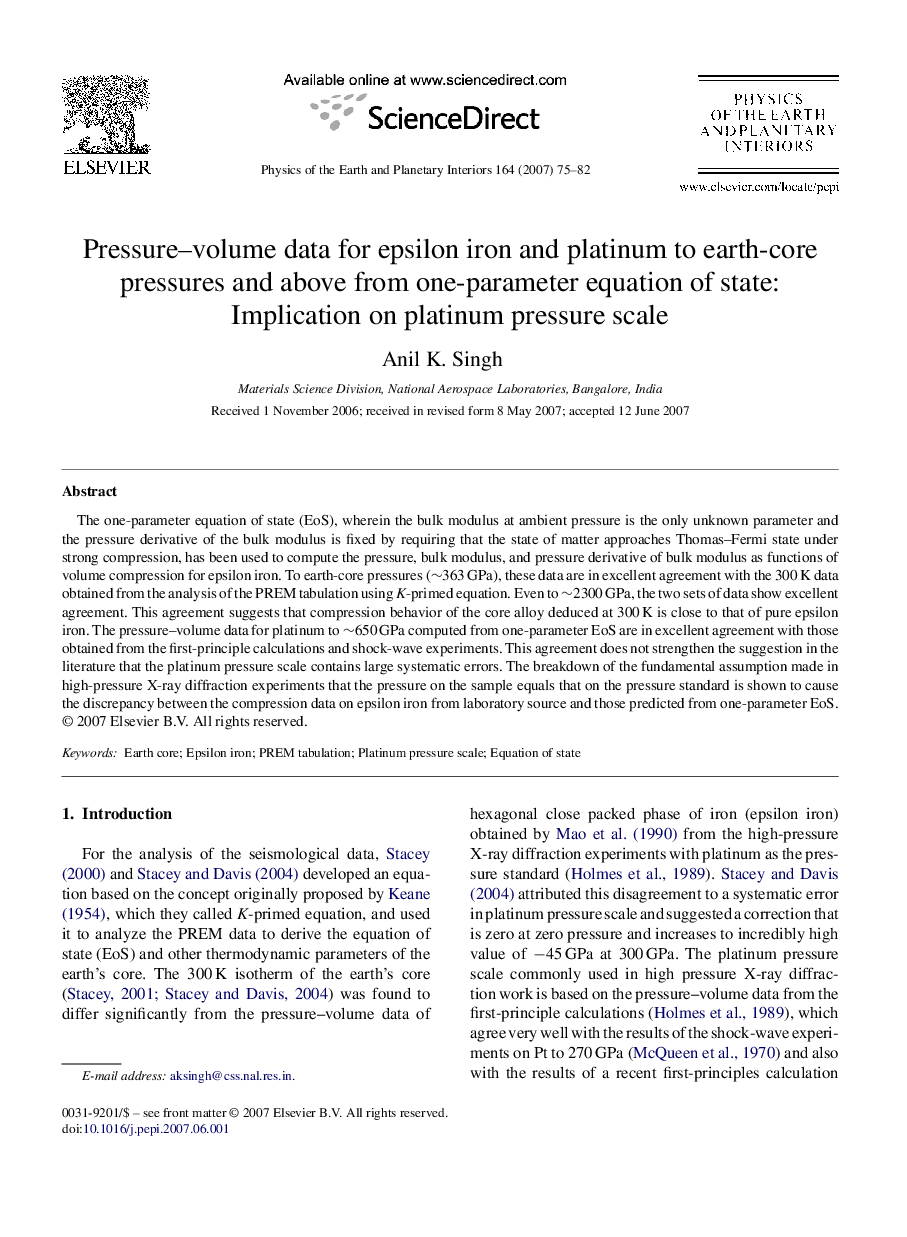| Article ID | Journal | Published Year | Pages | File Type |
|---|---|---|---|---|
| 4742501 | Physics of the Earth and Planetary Interiors | 2007 | 8 Pages |
Abstract
The one-parameter equation of state (EoS), wherein the bulk modulus at ambient pressure is the only unknown parameter and the pressure derivative of the bulk modulus is fixed by requiring that the state of matter approaches Thomas-Fermi state under strong compression, has been used to compute the pressure, bulk modulus, and pressure derivative of bulk modulus as functions of volume compression for epsilon iron. To earth-core pressures (â¼363Â GPa), these data are in excellent agreement with the 300Â K data obtained from the analysis of the PREM tabulation using K-primed equation. Even to â¼2300Â GPa, the two sets of data show excellent agreement. This agreement suggests that compression behavior of the core alloy deduced at 300Â K is close to that of pure epsilon iron. The pressure-volume data for platinum to â¼650Â GPa computed from one-parameter EoS are in excellent agreement with those obtained from the first-principle calculations and shock-wave experiments. This agreement does not strengthen the suggestion in the literature that the platinum pressure scale contains large systematic errors. The breakdown of the fundamental assumption made in high-pressure X-ray diffraction experiments that the pressure on the sample equals that on the pressure standard is shown to cause the discrepancy between the compression data on epsilon iron from laboratory source and those predicted from one-parameter EoS.
Keywords
Related Topics
Physical Sciences and Engineering
Earth and Planetary Sciences
Geophysics
Authors
Anil K. Singh,
